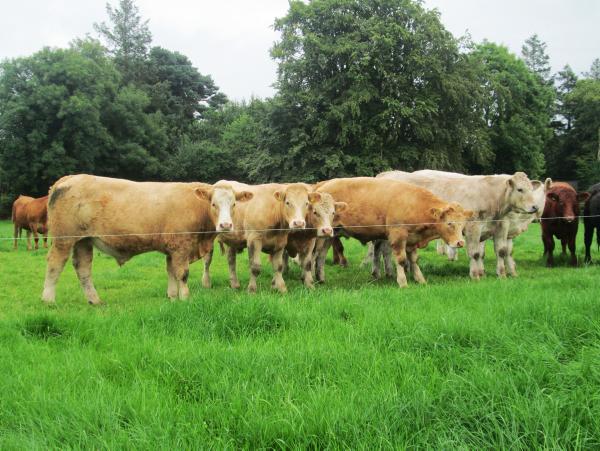Andrew Gardiner, Kilrea
We have had little to complain about so far with the grazing conditions this summer. However, the past week has seen over 110mm of rain fall at home. Our ground has started to suffer, with cattle becoming unsettled. As a result, paddocks are not being cleaned out as well as might be hoped.
Calves are remaining reluctant to forward graze, despite holding the cows tighter during the previous dry spell.
We have tried various methods of raising the electric wire without much success and calves appear to be more willing to creep via field gates into the next fields.
This should work OK as paddock size will increase slightly, leaving more suitable creep locations. We have introduced a small amount of meal to the calves in troughs, which will gradually be increased as weaning approaches.
Calves gained an average of 1.29kg/day from turnout until mid-July and hopefully we can maintain this performance until housing.
We have had clinical cases of immature rumen fluke in the previous two seasons around mid-August with calves scouring and a general lack of thrive leading to noticeable reduced weights at housing.
This year, despite the drier conditions, the symptoms presented in one of the March-born calves at the start of August.
All calves were dosed with Levafas Diamond (Oxyclozanide) and this should reduce the fluke burden as well as acting as the second stomach worm dose. Dung samples have been sent off, although they are unlikely to yield much information as the immature rumen fluke parasite will not show up.
During the warm weather, we had a case of pneumonia in a strong spring-born calf. We normally carry out a pneumonia vaccination programme during September pre-housing, but after discussions with our vet, we decided to bring forward the vaccinations.
This should ensure that the calves are well covered during the stressful periods of weaning and housing. Although the cost of this is not small, we think it is well worth it.
Growth on the farm has generally been recorded around 45kg to 55kg DM/ha/day over the past few weeks with demand at 51kg DM/ha.
We have not applied much fertilizer over the past few weeks as our stocking rate remains fairly moderate.
However, as calf weights (and hence intakes) increase, and with grass unlikely to seed, we will apply 15 to 20 units/acre when conditions allow over the next few weeks.
Silage aftermaths will also provide extra grass from now on. Any surplus grass at housing will be utilised by purchasing store lambs.
This year, we have trialled three acres of a lamb finishing crop including forage rape, stubble turnips and kale. The crop was sown during the first week of July with a plan to strip graze it post-Christmas with lambs to provide a rest for the grazing ground.
However, the crop has grown well and we may purchase some short-finish lambs soon to graze the crop until early September and then allow regrowth pre-winter.
Second-cut silage was cut during the heat of the last week of July. Grass was cut and spread, wilted for 24 hours and ensiled in good conditions.
We took this opportunity to cut several grazing fields as we don’t find bales that handy during winter. Yield was good so we should have a good surplus for this winter.
Silage will be analysed sometime this month to help decide on winter requirements. Regrowth has been excellent and will provide some timely quality grazing over the next few weeks.
We sprayed off eight acres for reseeding in early July. The ground is not suitable for ploughing and, despite our efforts, the older weed grasses formed a thatch on the surface.
It is not really suitable for direct drilling, so we gave a shallow run with discs to help break down the thatch. The rain has delayed sowing, but if we get a sufficient dry spell, we plan to drill with a Moore grassland drill. Otherwise I will give it a few runs with the discs and sow if we only get a shorter weather window.
The ground received 2t/acre of lime in spring 2012. Despite costing three times the equivalent ground lime, we reluctantly have bought some bagged lime to help reduce the acidity of the decaying grass and help germination.






 This is a subscriber-only article
This is a subscriber-only article












SHARING OPTIONS: